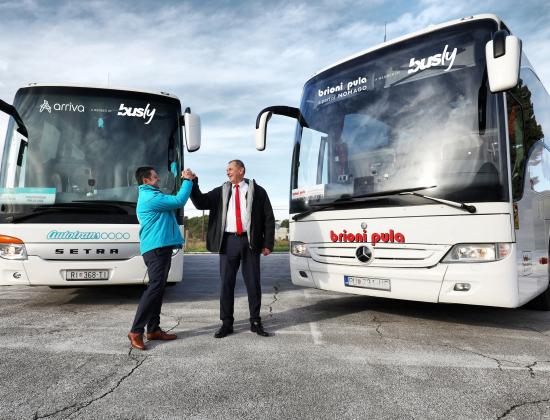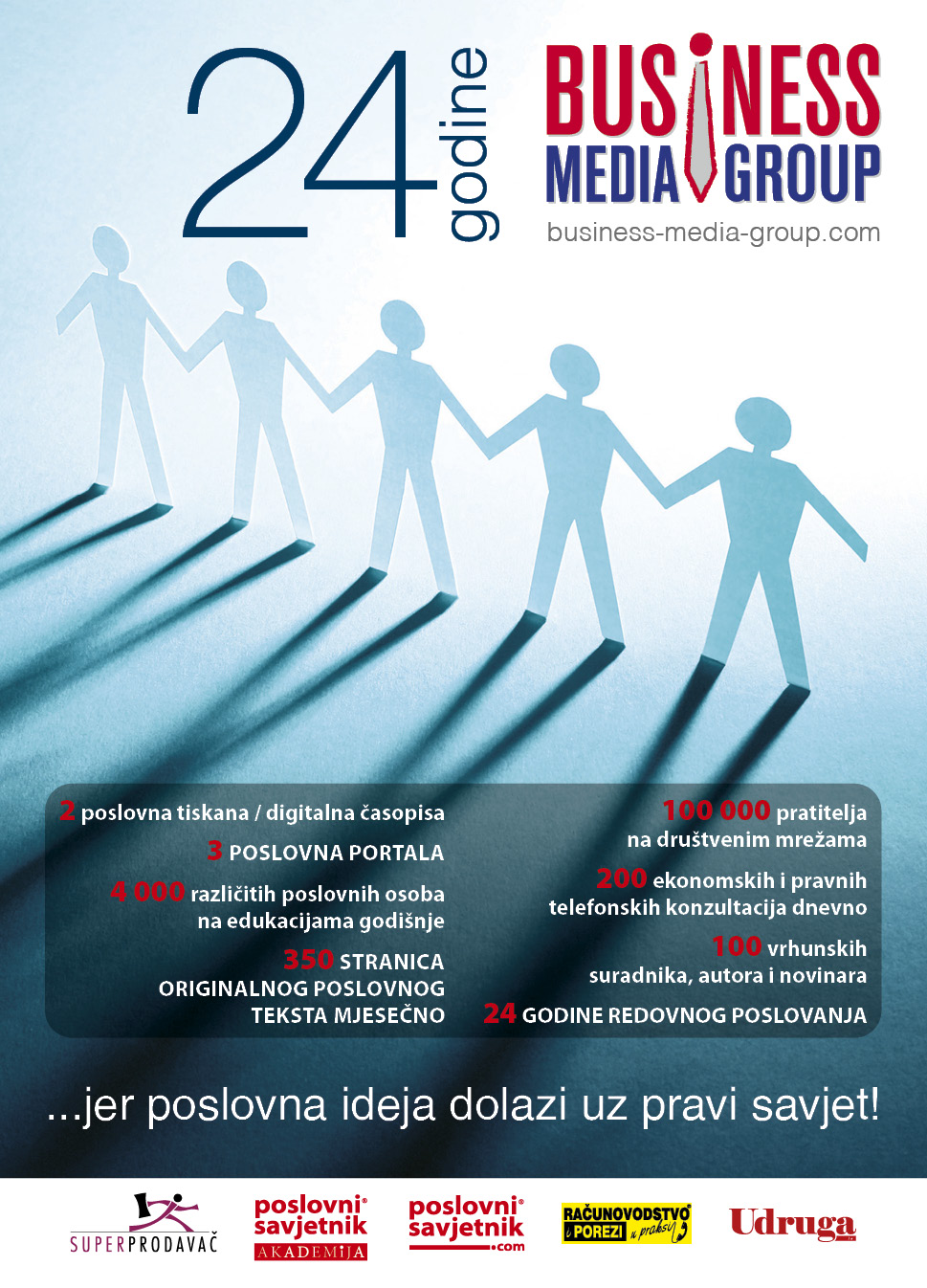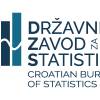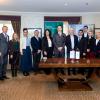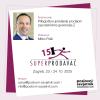John Lodder: Managers need to reinvent themselves to reinvent their Change Management

In my April column I try to solve one of the biggest leadership issues: “dare to say I don’t know.” Why do many companies fail to adapt a ‘Change mindset’ and 7 disciplines for Sustainable Change as an answer. A new poll on company culture might help you with some reinventions and ending with the global issue of 11% ‘Burned-Out’ employees and concrete suggestions how to ‘fix’ this if it is an issue in your company.
In July 2015 a McKinsey article was titled ‘’Changing Change Management’’. (Article (PDF-59 KB) with a clear conclusion:
“Change management as it is traditionally applied is outdated.
- We know, for example, that 75 percent of change programs fail to achieve their goals, largely due to employee resistance and to a lack of management support.
- We also know that when people are truly invested in change it is 30 percent more likely to stick.
- Organizations today must simultaneously deliver rapid results and sustainable growth in an increasingly competitive environment.
- They are being forced to adapt and change to an unprecedented degree:
- Leaders have to make decisions more quickly;
- Managers have to react more rapidly to opportunities and threats;
- Employees on the front line have to be more flexible and collaborative.
Mastering the art of Change quickly is now a critical competitive advantage.”
That was 2015, it’s now 2023: look around you…..what has changed in these 8 years?
The answer is simple: “Not much.”
Managers keep hoping the same old tricks will bring them different results while ignoring all the signs.
When sales and profits are down, we can't expect things to just magically change!
We have to reinvent our methods. (Dr. Nadya Zhexembayeva)
For many organizations, a five-year strategic plan—or even a three-year one—is a thing of the past. Organizations that once enjoyed the luxury of time to test and roll out new initiatives must now do so in a compressed period while competing with tens or hundreds of existing (and often incomplete) initiatives.
In this dynamic and fast-paced environment, competitive advantage will accrue to companies with the ability to set new priorities and implement new processes quicker than their rivals.
The Military is also an Organization.
A short opinion about failing management in the Russian Army was published by the Dutch NOS News on March 28, titled: “Russian spring offensive seems to have stalled, failures are stringing together.”
“The attacks have not yet stopped, but the Russian army is making little progress in eastern Ukraine.
Many military analyzes speak of a culminating offensive. That's military jargon for an attack that has passed its peak. "The offensive is fizzling out."
Han Bouwmeester nuances this picture. According to this brigadier general and professor of military operational sciences, the Russian offensive has never reached a peak and therefore cannot culminate. He said the attacks have lost their momentum.
Frontal attacks
The Russian attacks failed, he thinks, because "there was no surprise, they never got any speed and all creativity was lacking. Always the same frontal attacks."
Former Colonel Wijninga explains the stagnation largely due to the organization of the Russian army: "Bad coordination and poor management. It is much too hierarchical. For every problem they have to call Moscow, so to speak. The Ukrainians are much more flexible, their decision-making is faster. There is much more responsibility at the lower level, which makes them more creative."
Russians are behind
The information position of the Ukrainians would also be much better. "Because of all the help they get from the West, they see exactly what is happening on the battlefield, while the Russians often lag behind."
Wijninga "does not want to be too firm". Bouwmeester also warns that the attacks have not yet stopped. "Russian troops are still being moved and replaced. They have not given up yet. But the question is how to proceed," said the HCSS analyst.
Ten thousand troops have recently been trained in Belarus. It is unclear how many of these have already been deployed. Some of them are probably already fighting in Luhansk province. These troops are better than the untrained mercenaries of the Wagner army, which tried to take Bachmut. They have since been relieved by elite troops, but they are not successful either.
Conclusion is similar as in many commercial organizations: Delegation of responsibilities and decision-making, bureaucracy and engagement seem to be the major problem.
Crises happen when we least expect them.
Dr. Nadya Zhexembajeva wrote: Remember just two years ago when the Coronavirus was raging?
Markets plummeted, oil prices crashed and entire countries were on the verge of bankruptcy. Today, a year after the Russian Invasion in Ukraine, we have a war in Europe, a looming global food crisis, energy supply shortages, and continuous extreme weather events. What are we doing with so much volatility and disruption constantly happening around us?
When Covid-19 hit, I was getting calls from CEOs from all kinds of different countries, industries, and environments. And they were all asking me the same question. "What should I say? I don't know what to do, it's too uncertain. So what should I say to my people, my investors and my partners?"
Hearing this question instantly brought me back to 2015.
I was working with a company that was in crisis, desperately trying to survive while the whole industry was struggling. Amidst sleepless nights and intense projects, I noticed one peculiar thing. The CEO was (and still is) a very bright, kind, and effective person. But here, he would consistently raise his voice and become agitated and unproductive with seemingly reasonable questions and requests.
So, I asked him, "What's up?"
"I don't know what to do. I don't know what to tell them when they all come to me for answers.
So, I don't have any good answers, I get angry, and it spills over."
A kind, successful, all-around bad-ass professional was doing something extremely unproductive.
So this is what I told him:
"Why do you think you always need to know the answer?
Why can't you just say 'I don't know' - turn the question back to the one asking it, and figure it out together?"
Years later, he still tells me that THIS conversation has changed his life.
So what is one of my most frequent answers? "It's OK to say 'I don't know.”
The power of these 3 words: I DON'T KNOW.
- "I don't know" frees you from the false security of past success and 'best practice', as what saved you last time can be exactly what destroys you today.
- "I don't know" invites you to see the world with fresh and open eyes.
- "I don't know" allows your team, your partners, and your community to do the same, as you become a role model for so many.
- "I don't know" shows the level of confidence, self-awareness and authenticity that brings about real trust.
- And, most importantly, "I don't know" releases all the energy you are currently spending on keeping up the illusion.
The "I'm fully in control, I know what's going on" pretense. You can breathe out now.
I don't know. You don't know.
In a world that's so volatile and uncertain, nobody knows.
Not even the most admired expert, guru, or star knows.
So, we can stop wasting all that energy on keeping up a fake sense of certainty.
We don't know!
Allowing yourself to admit you don’t know is perhaps one of the most courageous and revolutionary acts of leadership in the middle of a storm.
Many companies fail to adapt to change
Dr. Nadya Zhexembajeva wonders ‘’HOW does a market leader collapse under new technology, new competition, new disruption, and new regulation, when they have all the resources to reinvent on time?’’
Why do 75% of all transformation efforts fail, leaving us hopeless, skeptical, and defeated?
One key issue we see is the need to align all key professions and functions that are responsible for organizational renewal.
In today's volatile and turbulent world, everybody needs to work together on anticipating change, designing change and implementing change in perfect congruence and alignment. (My last March column provided the practical tool called ‘the Titanic Syndrome’ to apply this.)
Yet, so often...
- Strategy cannot stand the "soft-hearted" change management
- Change managers are not particularly in love with business modeling and financial planning
- Innovation does not like conservative forecasters and risk managers
- Design thinkers and SCRUM/Agile professionals are too far away from the decision-making table
- ...and everyone is frustrated with the results, with the blame going on in circles
No, it's not always the case, there are a few incredible exceptions; but it happens so often that it is paralyzing our global resilience and reinvention capacity.
How do we fix this?
- We stop creating artificial competition between the different functions and schools of thought.
One is not better than the other - all are needed, and all need to be in a leading role at different stages of reinvention. - We stop looking for one simple answer, one magic solution, one silver bullet - and we create an integrated process that produces and plants enough "seeds," enough experiments and initiatives - of which some will not make it, but some will grow and bear fruit.
- We start working within one integrated framework and create a thought-out result-oriented well-oiled process we can use again and again.
- We need a ‘reinvention mindset’.
Seven Disciplines for Sustaining Change
Dr. Dave Ulrich is Professor at the University of Michigan Ross School of Business, he recently wrote an interesting article about ‘Sustaining Change’ which I summarize.
“Change happens; sustaining change happens less often, most well-intended change efforts do not last”:
- 97 percent of dieters regain everything they lost and then some within three years.
- In the U.S., 50 to 70 percent of freed inmates will be arrested again within five years.
- 70 percent of organization change programs fail.
- And so forth.
As individuals, leaders, and organizations face unprecedented challenges, a global pandemic, emotional endemic, recession cycle, and technology disruptions, declarations of a new normal, seismic shifts and the greatest revolution in how work is done often fade.
With good intentions, many individuals, leaders, and organizations explore new ways to set goals, accomplish tasks, engage employees, reinvent organizations, and care for themselves and others.
But too many of these aspirations recede as old patterns re-emerge.
Sustaining desired changes is not a new challenge, but ever more important in a rapidly changing world. Knowing what to do or experimenting with how to do it (e.g., during pandemic) is not enough; we must fully embed change, which requires applying disciplines of sustainability.
In our work (see Leadership Sustainability), we distilled ideas, research, and actions into seven change disciplines that individuals, leaders, and organizations can apply to change efforts to embed them deeply and make them into habits.
These are the disciplines with specific current actions to make change sustainable:
1. Simplicity
Simplicity is the principle of prioritizing key actions and choosing the few that will make the most difference to outcomes that matter. Grandiose declarations (public statements or initiatives often beginning with the word “great”) often become fads: short-term, quick-fix, shiny objects.
Change sustainability requires prioritizing actions most because doing so creates value that matters. In recent years, as the analytics movement evolved from benchmarking to best practice to predictive analytics to guidance, leaders have greater tools in prioritizing which actions create stakeholder value by using a guidance system to test the impact of initiatives. Sustainability comes from simplicity by prioritizing what matters most.
2. Time
Where people spend time working has changed. With social isolation from the pandemic and connection through technology, remote and now hybrid work has become a new standard for many (not all). Sustaining this change is less about where and how people work (home vs. office; in-person vs. digital), and more about why people work and what they work on. When employees see why their work enables their values, creating meaning (believe), growth (become), and connections (belong), they are more likely to sustain new work practices that enable them to spend time on those things that matter most. When leaders ensure that what employees work on creates value in the marketplace, new ways of working persist.
3. Accountability
Employees today with more choices also need greater accountability for their choices.
Navigating the accountability paradox means that employees have agency or autonomy to make choices about where, how, why, and what they work on and at the same time be accountable for how those choices impact others. When personal and organizational choices impact customers (“Will these actions increase customer share?”), investors (“Will our market value go up by doing these actions?”), or communities (“Will our social citizenship reputation improve?”), then changes in those work practices will likely be sustained.
4. Resources
Individual or isolated changes become institutionalized when they are part of a system.
Providing resources sustains change by institutionalizing change efforts into human capability a systemic way to deliver value through talent, leadership, and organization. The right talent means that employees have the competence and commitment to meet business requirements. The right organization comes from creating a culture inside the organization that reflects the promises made to customers.
Leadership sustains change when leader competencies reflect the firm brand in the marketplace.
Human capability (talent, leadership, and organization) sustains change through HR functional excellence, which includes innovative HR practices (around people, performance, information, and work) and competent HR professionals. Change initiatives without these dedicated resources are less likely to be sustainable.
5. Tracking
The maxims are true: you get what you inspect and not what you expect; you do what you are rewarded for (and so does everyone else); and you shouldn’t reward one thing while hoping for something different. Unless desired work changes translate into specific, quantified, and tracked actions, they are nice to contemplate but not likely to get done. The advancement in analytics about work sustains change because work goals are transparent, easy to measure, timely, and tied to consequences. Change sustainability can be woven into existing scorecards and even becomes its own scorecard to monitor any change effort.
6. Melioration
Melioration (a Latin word meaning to improve or be resilient) includes a whole complex of actions and attitudes designed to make things better. Leaders meliorate when they improve by learning from mistakes and failures and demonstrating resilience. Change is not linear. Most of the time, change includes try, fail (or succeed), try again, fail again, and so forth. When we learn from each attempt, the outcomes we intend will eventually come to pass. Change sustainability requires that leaders master the principles of learning: to experiment frequently, to adjust incrementally, to reflect always, to become resilient, to face failure, to not be calloused to success, and to improvise continually.
7. Emotion
Sustainable change requires both an intellectual agenda of what should be done, but also an emotional passion for how it feels to do the work. In the last few years, leaders have been encouraged to attend to mental health issues (depression about the past, anxiety about the future, and loneliness and burnout in the present). Leaders sustain change when they exhibit emotion by sharing their feelings, empathy by being open to the feelings of others, and energy by staying enthused about the future. Action without passion will not long endure, nor will passion without action.
8. Conclusion
In a world where change needs to not only occur but be sustained, these seven disciplines spell the mnemonic START ME, which is apt because change sustainability starts with me.
These seven disciplines turn hope into reality. When mastered, these seven disciplines will help employees turn their personal aspirations into daily actions; leaders lead with confidence in the future; and organizations continually reinvent to meet market demands.
To begin, select a change required, hoped for, or expected for yourself or within your organization.
Now, ask seven change discipline questions to diagnose and improve your ability to sustain the change as seen in Figure 1 – Sustainable Change Application Tool.

Organizational Culture
Gallup measured U.S. employees’ perceptions of their organizational culture and the extent to which a strong culture is a competitive advantage for organizations.
In Figure 2 you see that 21% of USA employees feel connected to their Organization Culture. This is comparable to the European average.

Figure 2 – Employees feeing connected to Company Culture.
Why Does Workplace Culture Matter?
Culture is the unique way that your organization lives out its purpose and delivers on its brand promise to customers. For this reason, a strong workplace culture functions as a differentiator in the marketplace.
Your culture is the unique way you attract customers, retain them and turn them into brand advocates.
It's also the way you attract highly talented employees and turn them into brand ambassadors.
In our experience with clients, employees and teams that feel most strongly aligned with their culture are more engaged, less burned out and less likely to leave their employer. They also perform better!

Figure 3 - Profits of a thriving Company Culture.
Leader, Manager and Individual Connections to Culture
Unfortunately, only two in 10 employees strongly agree that they feel connected to their workplace culture.
Employees' feelings of detachment align with how they believe their teammates and managers contribute to their organization's culture. Only two in 10 employees strongly agree that their coworkers are committed to their organization's cultural values, and the same proportion of employees strongly agree that their manager explains how the organization's cultural values influence their work.
In contrast, employees tend to think the people who set the direction for the organization -- their leaders -- are more committed to the organization's cultural values than the rest of the organization.

Figure 4 – Employee perception of Culture
Connections and Culture Values.
Gallup data show that senior leaders do indeed tend to have a better understanding and sense of alignment with their organization's culture than most other individuals do. In fact, leaders are twice as likely as individual contributors to strongly agree they feel connected to their culture.
In some ways, it's good for leaders to feel somewhat closer to their organization's values and culture because they set the tone for everyone else.
However, a divide this large reflects a disconnect in how leaders and other employees are experiencing their work environment.
Notably, this gap in perceptions of connection to workplace culture is not simply due to the hierarchical nature of roles within organizations. Managers, who are responsible for creating a strong sense of culture, are nearly as likely to struggle with feeling connected to the organization’s culture as the people they lead.
We often see that this results from managers who experience the disconnect between the company messaging they are supposed to promote and the actual behaviors lived out in the organization.

Figure 5 – Feeling Culture Connections of
Leaders and Employees.
Remote Work and Connection to Culture
The remote work twist: Fully on-site work isn't the answer to building your workplace culture.
In the new world of remote work flexibility, there is substantial concern among business leaders and workplace experts that working outside the office too frequently will erode workplace culture and collaboration.
Gallup research shows that fostering culture and collaboration indeed tends to be more challenging when people mostly work from different locations.
However, we caution that having employees work on-site does not guarantee a stronger connection to workplace culture, as is evident in the similar connection to culture for exclusively remote and on-site employees. Among all employees, those with a hybrid work arrangement have the strongest connection to their organization's culture.

Figure 6 – Connection to Organization Culture of
different employee categories.
Interestingly, we asked directly about how remote work might affect their organization long term.
Six in 10 U.S. employees at all job levels anticipate that if remote work becomes a norm at their organization, it will not have a long-term impact on their culture.
Leaders are more likely than managers and individual contributors to be concerned about remote work flexibility hurting their workplace culture: 27% of leaders believe their workplace culture would get worse if many employees work remotely long term, but only 16% of individual contributors say the same.
These insights highlight a need for greater awareness of the advantages and challenges of remote work flexibility, as well as training to work more effectively in a hybrid environment.

Figure 7 - Impact remote work on Organization
Culture.
To Curb Burnout, Design Jobs to Better Match Employees’ Needs
11% of the global workforce suffers from a burnout. Burned out employees show that there are urgent problems to be addressed at the heart of any organization.
Burnout is a management and organizational issue, not a physical or mental health issue!
Burnout is a response to chronic job stressors, high-frequency events embedded in workplace practices that have not been successfully managed. Over time, these stressors lead to an erosion of workers’ energy, involvement, and self-confidence to the point where they feel exhausted, cynical, and ineffective in their job and “burned out.”
There are many well-intentioned efforts to solve burnout in the world of work, but frequently, they address the effects of the problem, not its source. Burnout is a management and organizational issue, not a physical or mental health issue, so promoting self-care won’t help employees recover.
Think of burned out employees as canaries in the coal mine. When the canary keels over, we acknowledge that the environment is hazardous; we don’t tell the canary that it should take a long weekend.
The whole notion of burnout treatment needs to be flipped. Burned out individuals show that there are urgent problems to be addressed at the heart of any organization.
The real solution is to redesign workplaces so that the causes of burnout are no longer so frequent or intense. In other words, how can chronic job stressors successfully be managed at their source?
The answer to this question lies in improving the match, or good fit, between workers and the workplace.
Yes, it is OK to help individuals cope with burnout, but it is more important to create better job matches for them. Based on Christina Maslach and Michael P. Leiter we look to what is causing the burnout and how to fix that.
The Various Sources of Mismatches
The kinds of chronic job stressors that cause burnout, the “pebbles in your shoe” that lead to exhaustion, cynicism, and ineffectiveness, can emerge from several kinds of mismatches. These mismatches reflect a bad fit between the job and basic human needs, such as competence, belongingness, and psychological safety. Such mismatches can occur in seven area’s which apply to all people, regardless of their job:
- A mismatch in skills like doing a job you are not trained to do or for which you are over qualified
- A mismatch in workload often involves high demands and insufficient resources to meet those demands successfully (for example, not enough time, staff, information, equipment, etc.).
- A control mismatch involves inadequate autonomy to do the job well,
- A reward mismatch means that good work is not receiving appropriate recognition or opportunities.
- Community mismatches are most extreme in socially toxic workplaces where there is incivility, bullying, or harassment, rather than mutual trust and support.
- A mismatch in fairness involves discrimination and inequitable practices, while
- A values mismatch means that there are ethical, moral, and legal conflicts in the workplace.
This mismatches framework can be used to better understand the true nature of chronic job stressors.
For example, the CEO of an 800-person organization believed that his employees would have negative ratings about workload (because “everybody complains that it is too much”) and reward (because “everybody wants a higher salary”). However, after conducting a survey assessment of the organization, the CEO was shocked to see that instead fairness was the most severe mismatch.
One fairness-related stressor that stood out was a “distinguished service award” that employees overwhelmingly felt was rigged to be given to undeserving recipients. Once it became clear that the nomination and decision processes were widely despised and distrusted, the company set out to redesign this award and eventually agreed to a new way to recognize distinguished service and to reward it appropriately.
When the organization a year later did a follow-up assessment for our research, we found that the issue of fairness was no longer a company liability.
This example shows that identifying the specific area of mismatch is just as important as identifying the stressor; if the CEO had attempted to address derision about the service award as a “reward” problem, he might have exacerbated the situation by increasing the cash prize associated with it.
Another important aspect of moving from mismatches to matches is gaining flexibility.
The U.S. Air Force’s search for the perfect fighter jet cockpit provides a valuable lesson. In the 1950s, Air Force engineers took on a huge project to measure the exact dimensions of an average man’s body (only men were Air Force pilots in those days). From length of shin to the width between a fully extended thumb and little finger, no calculation was too small. Their goal was to design a seat and instruments that would be perfect for the average person.
The glitch was that, when finished, they discovered there were no people who were average on all measurements. They had built a perfectly average cockpit that fit no one. To their credit, rather than give up, they turned the project on its head, and designed cockpits that were adjustable across the critical dimensions. That approach allowed people with all their distinct personal dimensions to create matches with their working environment.
This example of building flexibility around physical qualities sets us in the right direction to explore flexibility around psychological qualities in order to create better matches between workers and jobs.
For example, in our research we frequently identify micromanagement by supervisors, a mismatch of control, as an employee stressor. Lack of control over when, where, and how to work frustrates people’s sense of autonomy and competence.
But, as with designing jet fighters, there is no one-size-fits-all solution to creating a control match.
Rather than trying to generate one ideal system of control, organizations should foster a flexible dialogue that can adjust to the qualities of the supervisor, the employees, and the nature of their job.
Redesigning Jobs to Create Better Matches
Improving matches, helping people find fulfillment within an area of work life, can nudge employees away from burnout and toward engagement with work. Leaders should embrace the idea that developing their workplaces is a creative process.
Fixing problems won’t involve applying a single “best practice.” A leader’s job is not coming up with the answer: it is running a collaborative process with employees to address the persistent mismatches that employees experience at work. We recommend five critical steps:
1. Ask for input on mismatches.
Although assessments often do confirm what leaders think is happening, it is important for them to be open to learning something new.
The most direct route to identifying mismatches is to ask people (anonymously) about their experiences and their suggestions for how to make improvements. Administering a survey starts a conversation with employees.
Their responses are their proposals for consideration by leadership. What are the chronic job stressors, and how might these be modified or eliminated?
Sometimes the message is straightforward, such as “the workload is just too much.” But often the message is more nuanced. In some organizations the workload may be challenging, but there may be greater concern about the amount of autonomy employees have over what they do (a control mismatch).
In other settings, people have indicated they could handle the workload if team members could work together in a more respectful and cooperative way (a community mismatch).
After asking for input, it is essential for leaders to summarize the findings and share them publicly. This is the only way to convey that “we have listened to your input, and this is what we have learned from it.” In a previous HBR article, we noted that it is essential for leaders to provide feedback to employees who have taken the time to answer their survey questions.
2. Pivot to consider a range of positive matches.
The next step is to develop new ways of doing things. A timely and thoughtful public presentation of the survey results for the organization as a whole, as well as for each unit, continues the conversation by shifting to the possibility of positive change. It is important to immediately ask for ideas of how to do things better.
This step calls upon creative problem-solving to find viable solutions for persistent mismatches.
3. Begin with attainable goals.
Often when designing better matches, it is more important to make small, tangible gains quickly, rather than to embark on a long journey toward a large gain. For example, unit managers in a hospital complained of a tedious procedure for approving overtime for nurses. When such procedures were streamlined in the wake of the pandemic, the unit managers gained more time to devote to their staff and patient load. Plus, being given the authority to make these approvals demonstrated a show of trust and respect from higher-ups they hadn’t felt before.
This easy win improved their matches on control and workload with minimal risk or cost to the employer. Although modest in scope, the change demonstrated leadership’s willingness to improve job conditions, as well as employees’ potential to have a voice in decisions that affected their work life.
4. Use design principles.
People often describe processes that lead to mismatches as too complicated, rules and regulations that add unnecessary steps to their job and interrupt a sense of flow to their work. When redesigning jobs simplify them where possible.
If new tasks are being added, then other tasks need to be subtracted. Good design also balances intensity with restful periods. It alternates social involvement with deep work alone, and alternates stretches of intense concentration with periods of quiet reflection.
For jobs where remote work is possible, strict office-only and hybrid-work policies can lead to many types of mismatches. People chafe at inflexible policies that insist that everyone must come to the workplace all the time when some tasks can be done just as well at home. Developing a process with a practical rhythm of “together time” balanced against “solitary time” (perhaps remote) can have a positive effect on community, workload, fairness, and control matches.
5. Build in progress checkpoints.
Whatever innovations are developed will need continual assessment, adjustment, and refinement. Real progress always involves practice and course-correction. An organizational checkup that assesses the central elements of job-person matches keeps efforts on track.
Ongoing monitoring of the workplace through a process of change and continuous improvement can shift the concept of a “job-person match” from an abstract ideal to a practical dimension of workplace management.
Rather than discovering a silver bullet to eliminate burnout, executives need a new way of thinking about leadership at work.
Managing in the third decade of the twenty-first century calls for greater responsiveness to the mismatches that employees experience at work, closer attention to their psychological motivations, and greater flexibility in job design and work conditions.
They must broaden their capacity for leading collaborative problem solving with employees and managers. Burned out employees signal the need to fix mismatches throughout the organization, which will have positive implications for all employees, not just a few.
A recent Gallup poll found that 80% of workers worldwide are “not engaged” with their job. Although those 80% are certainly not all burned out, they likely experience some elements of exhaustion, cynicism, or inefficacy at work. Improving job-person matches does not simply avoid the most negative outcomes, rather it increases a workplace’s potential to bring out the best in the workers of the future. PS/SM


